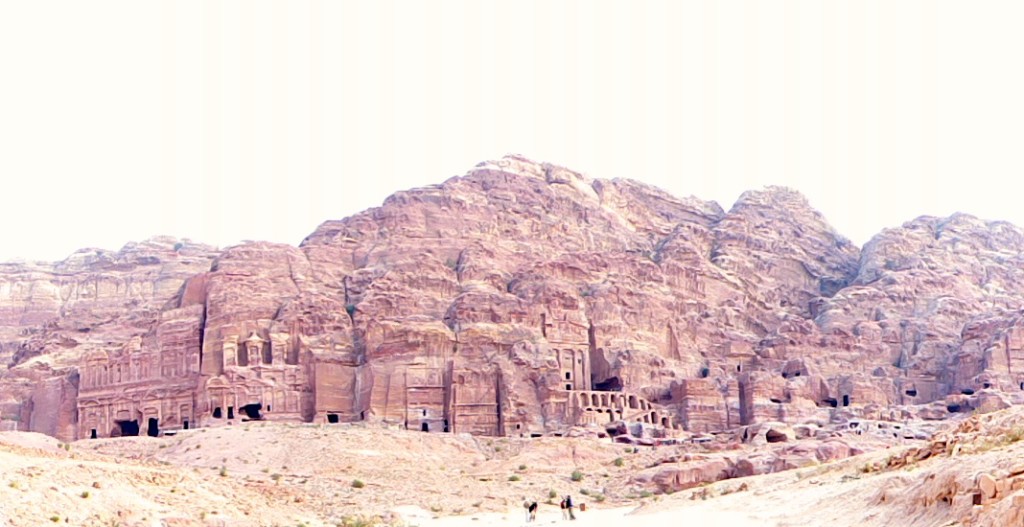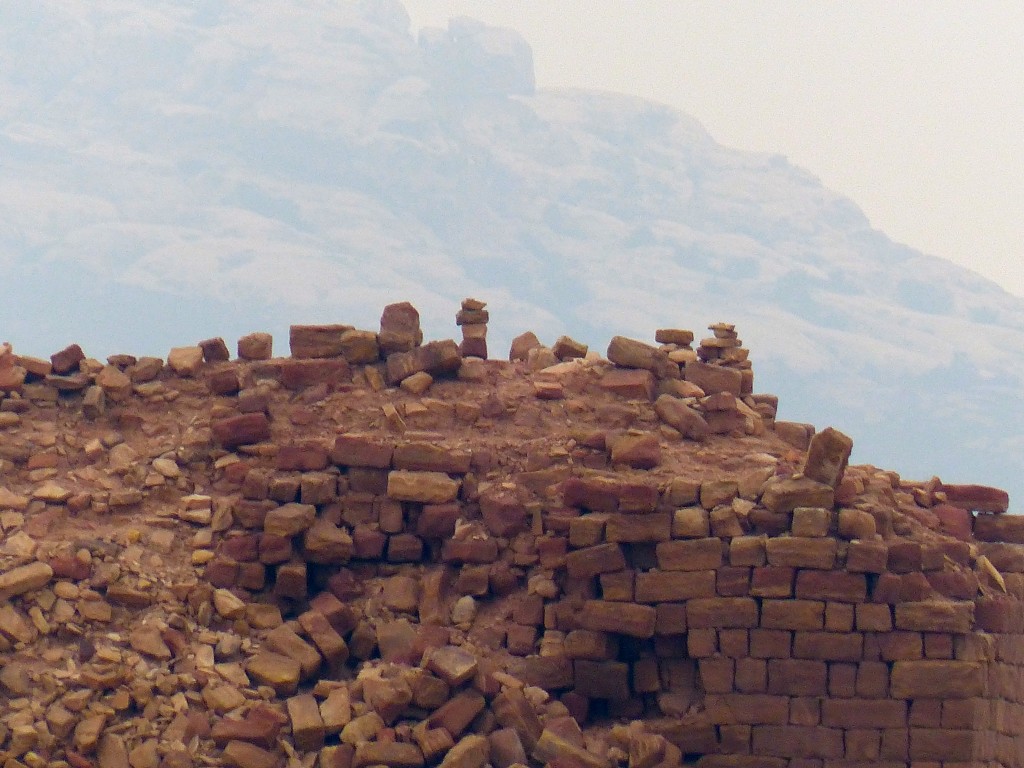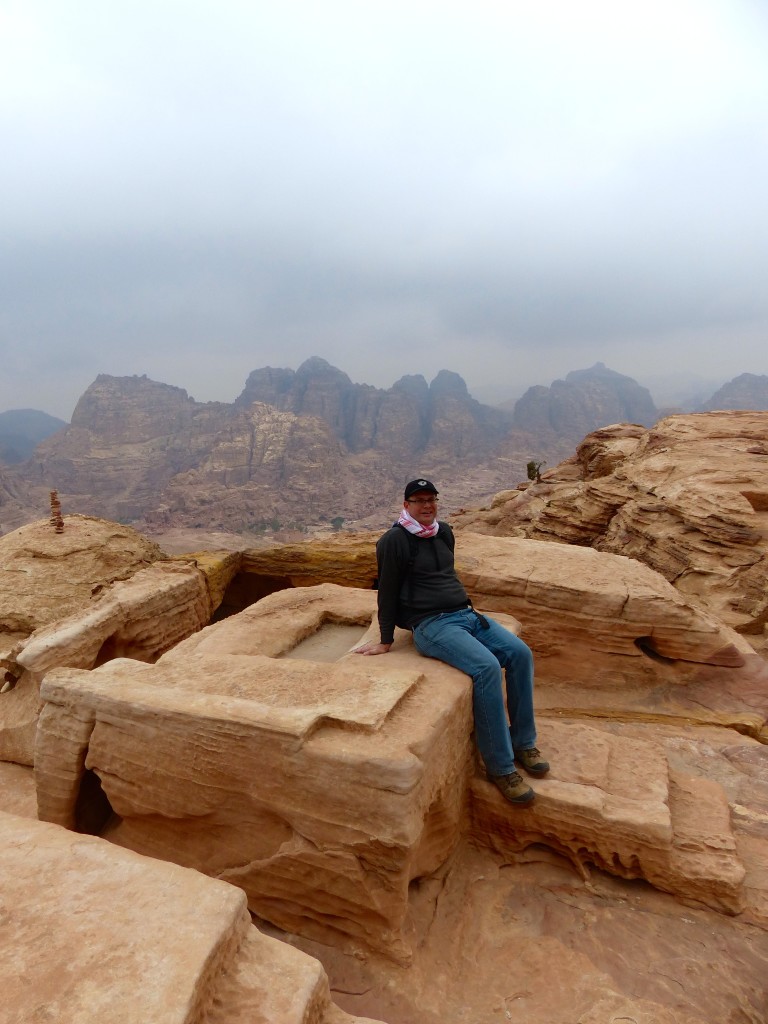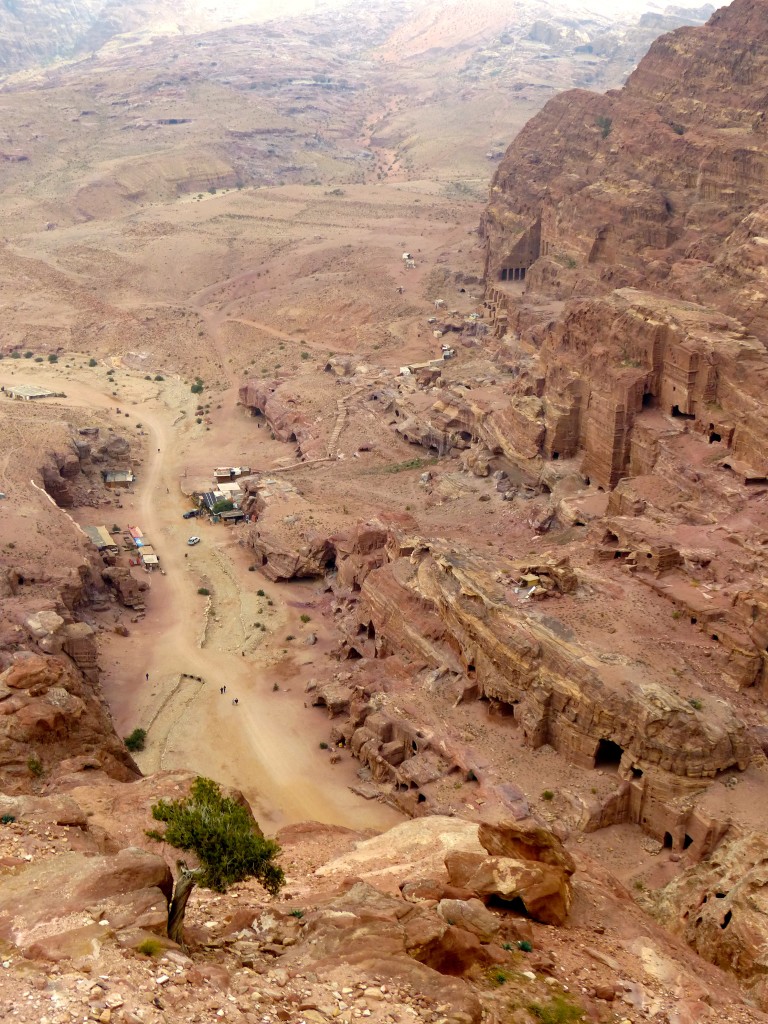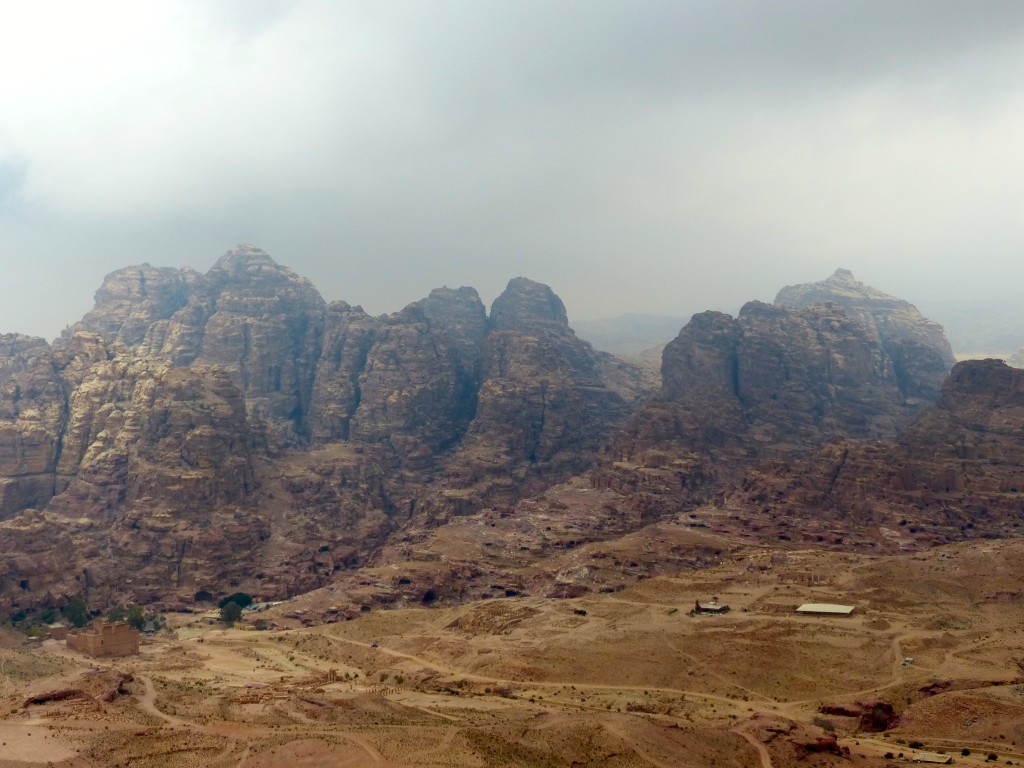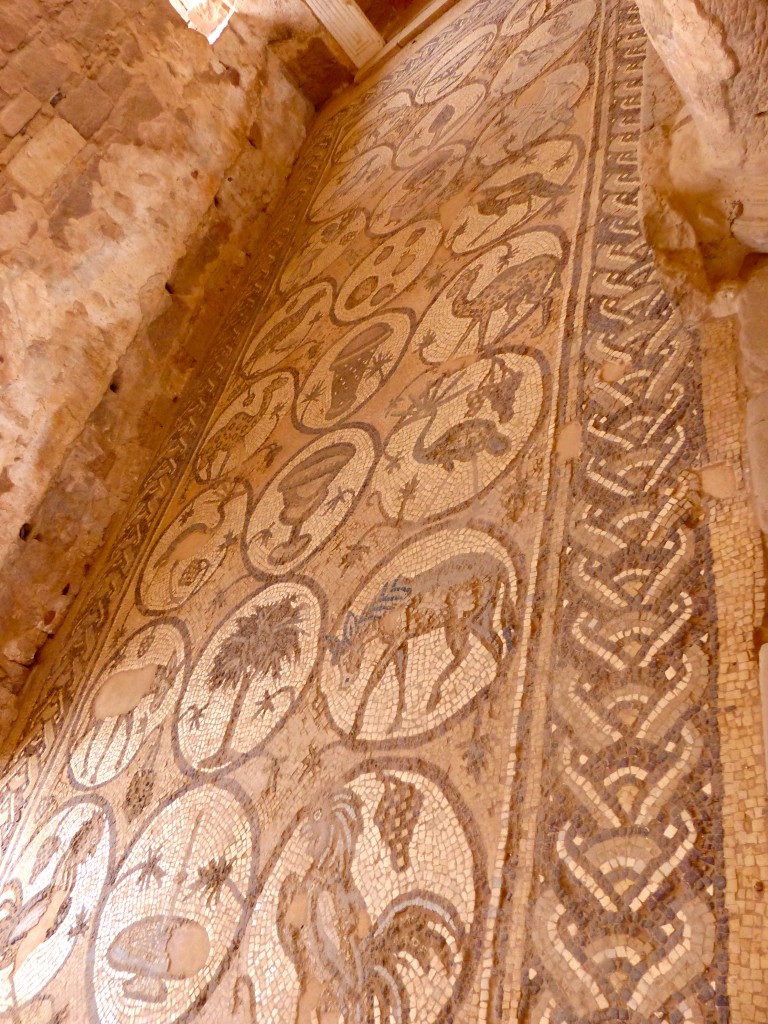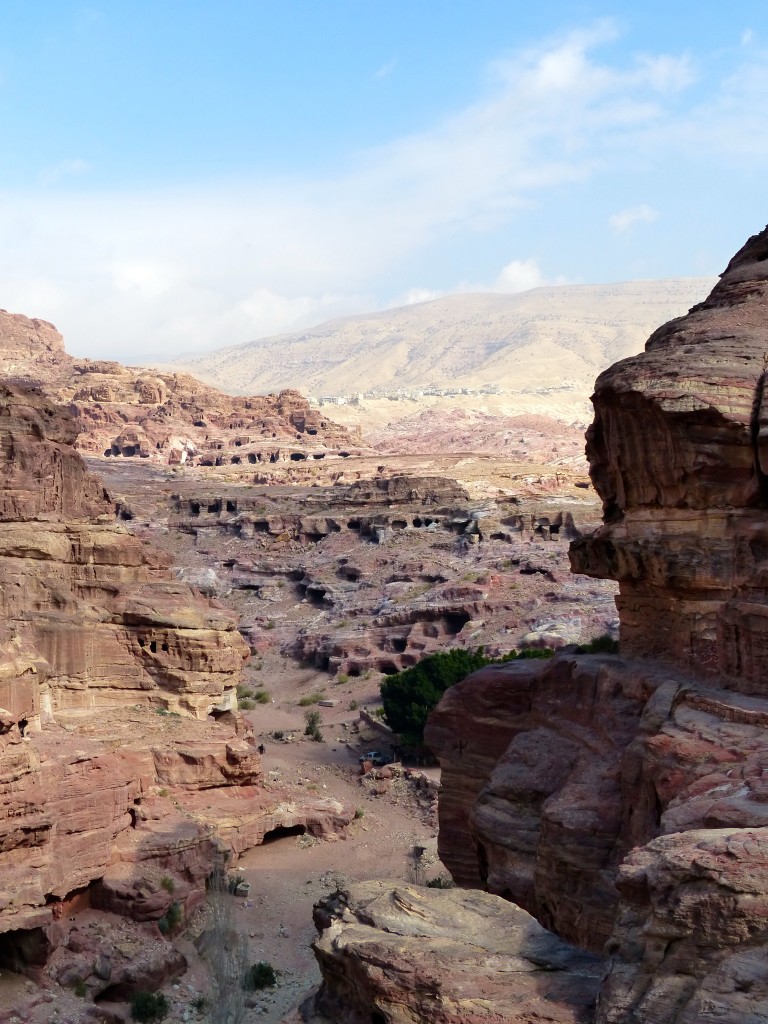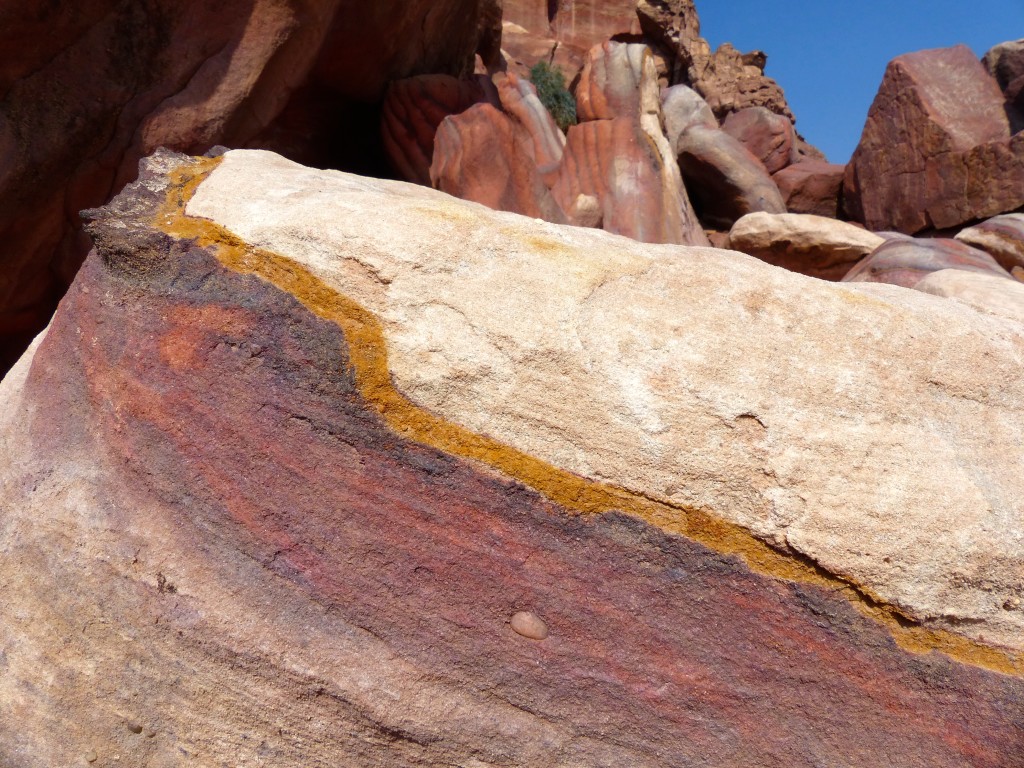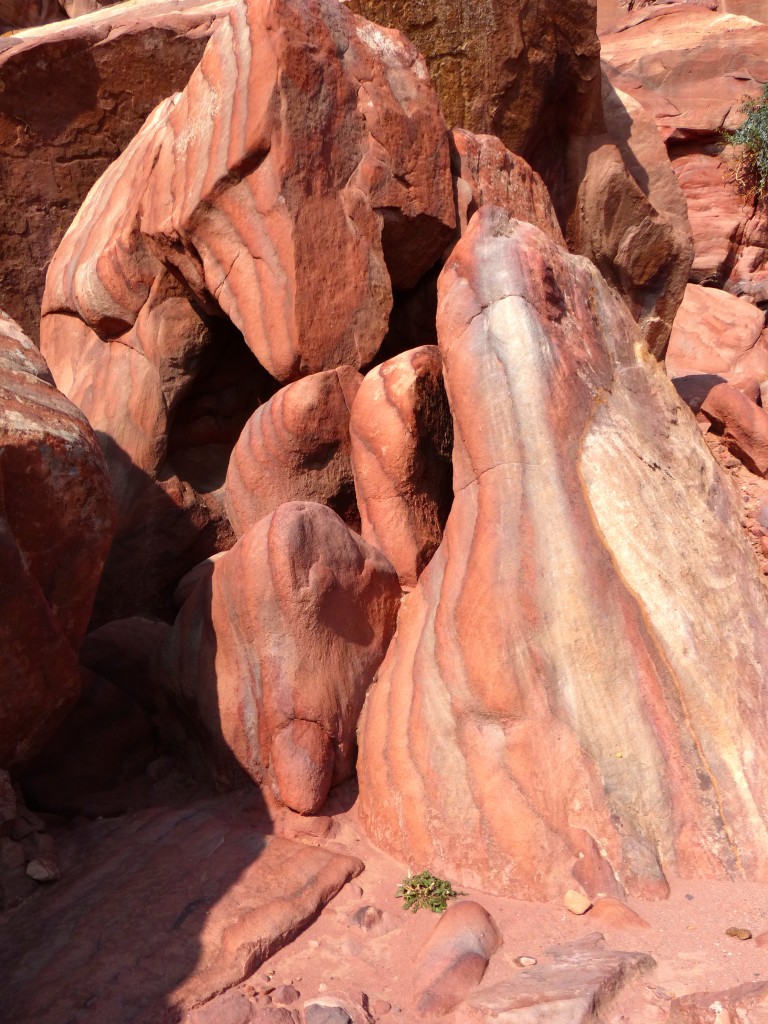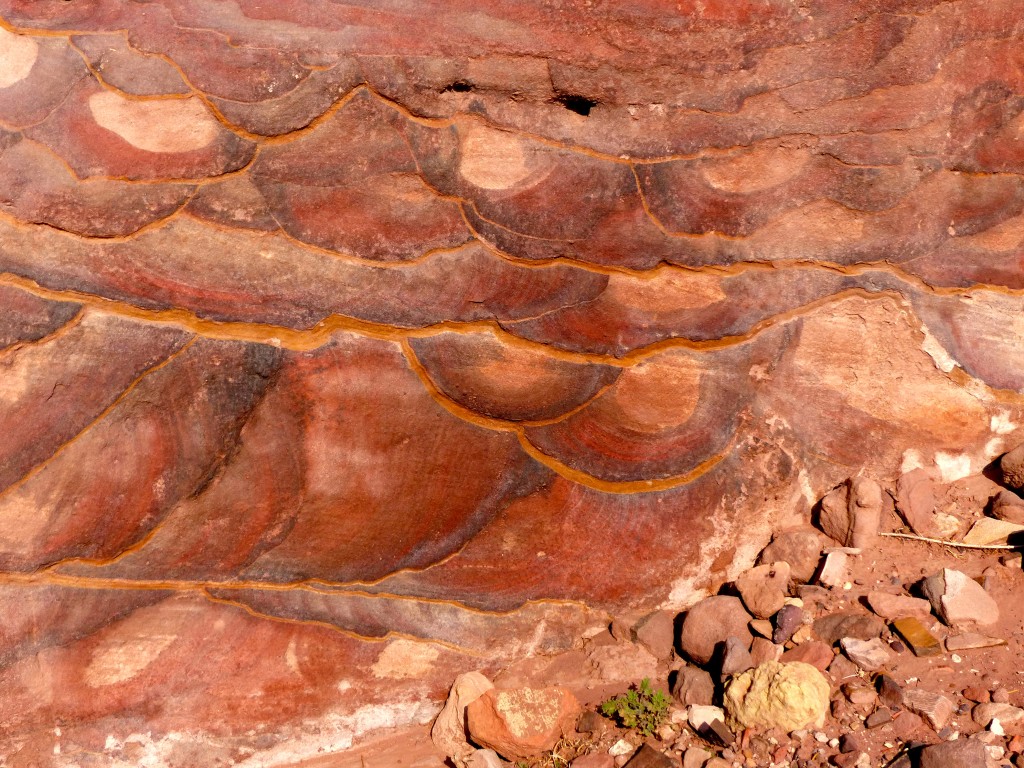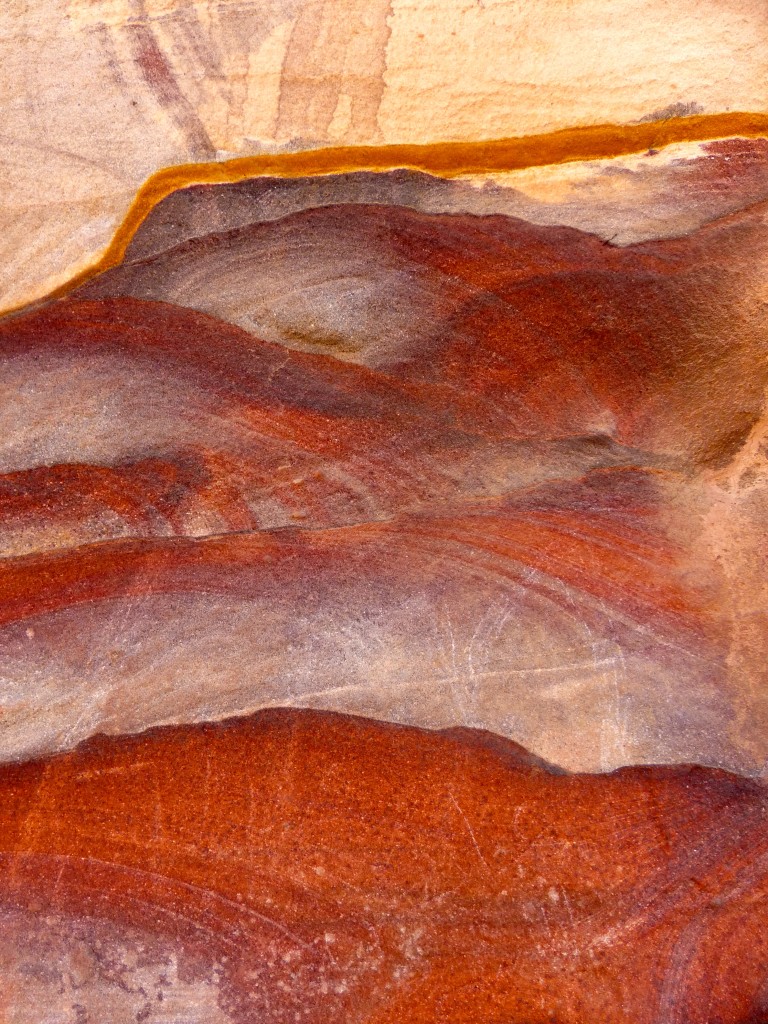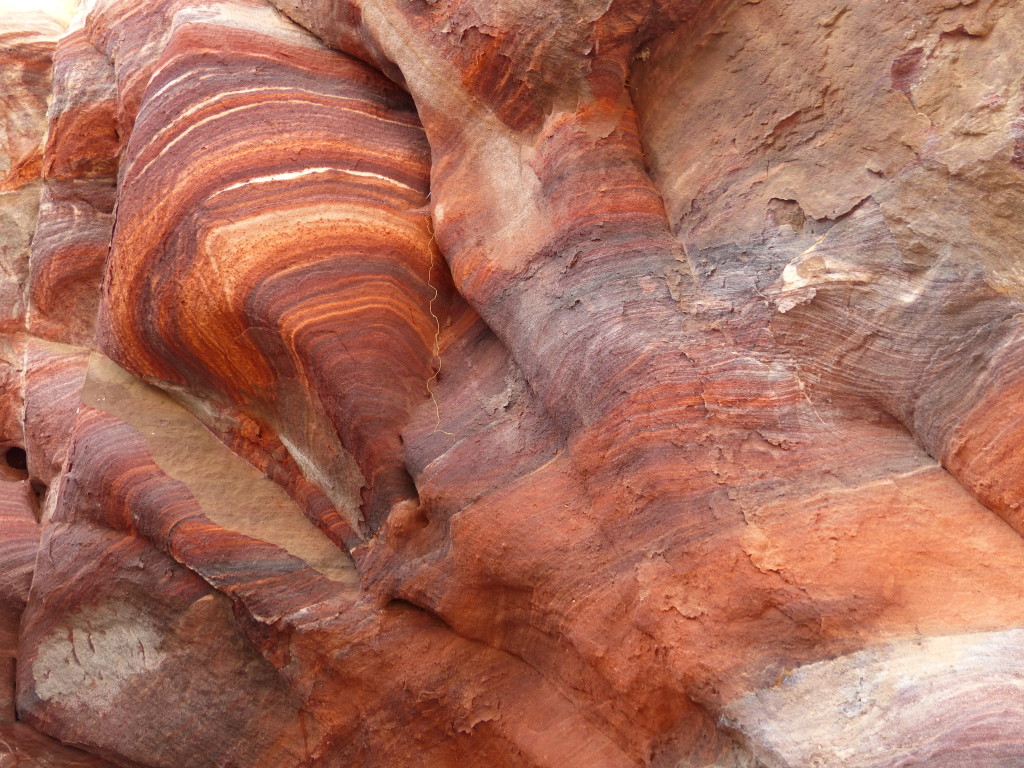First into the park again on this cold cloudy morning, we chose a trail that would take us to the High Place of Sacrifice. The path was very easy to follow, and yet we took a wrong turn. At one hair-pin bend in the path, I saw steps to the right but for some reason chose to follow the footsteps in the sandy rocks that led straight ahead. It became a joke for the rest of the trip: “I see stairs over there, but I think we should follow these footsteps instead.” We scurried up a steep rocky trail, climbed over boulders and ultimately reached the other side of the mountain. The view was gorgeous, but there was no sign of a sacrifice altar. Looking over our shoulders, we saw two unfortunate hikers had followed us. We backtracked and apologized for leading them astray. The four of us returned to the point where the trail had split, chose the route with the stairs and soon reached our destination.
Steps led the way to two obelisks – which were left standing after the hillside around them was cut away, most likely honoring the two most important Nabataean gods, Dushara and al-Uzza. Just opposite were crumbling rock-block walls, which may have been a crusader fort. More steps lead up to the altar, where Nabataeuns probably performed ritual killings of animals. Archaeologists have found no evidence of human sacrifice at this spot, but inscriptions at other Nabataeun sites suggest it happened.
According to the sign at the site:
The cult complex before you includes a rectangular courtyard with three carved benches, or a “triclinium,” and a low table at its center that may have been the seat of the master of the ceremony. An altar stands to the west on which baetyls (stone blocks representing a god) were placed. To the left of this is a platform with a carved circular basin which was possibly used to collect rainwater for purification and a cup-shaped recess with a drain that may have received the blood from sacrificed animals. Sacrificial remains recovered from other Nabataean relicious sites include burnt offerings of cereal grains and livestock.
We spotted this well-accessorized mule on the way back down.
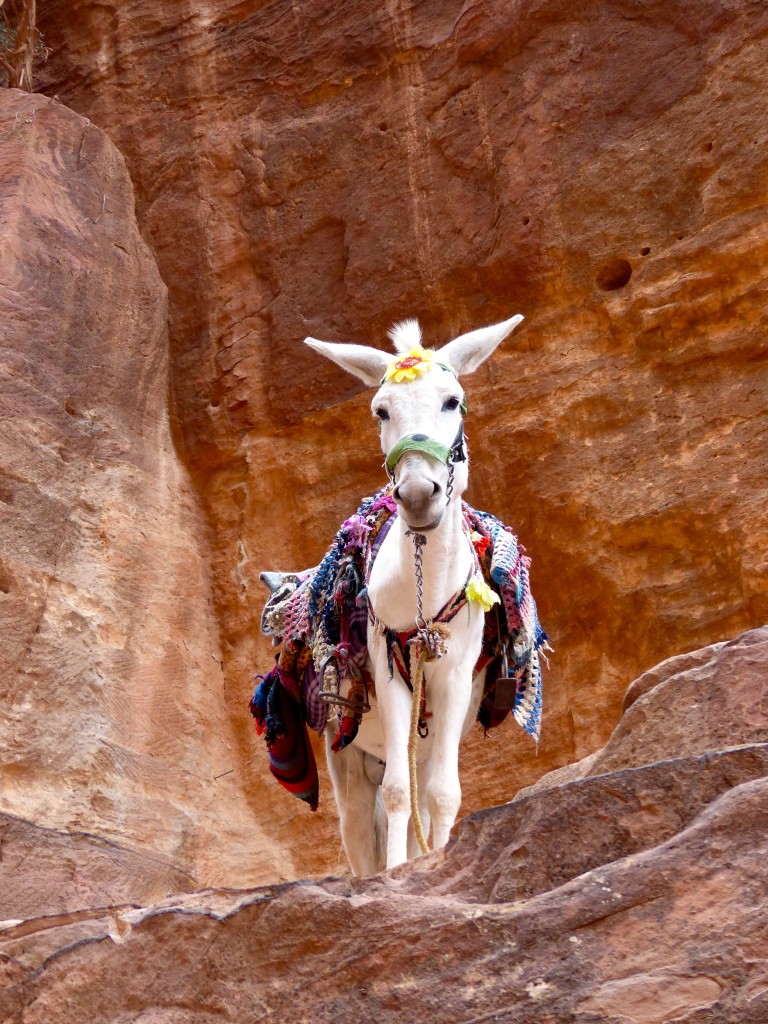
After a short rest and breakfast picnic, we continued our exploration. One of the highlights for me was discovered during excavation of the Byzantine Church in 1993. Researchers found 140 papyrus scrolls that recorded the goings-on of one extended affluent family in Petra between 528 and 582 AD. The scrolls were carbonized (partially burned, which preserved the writing) in a 7th-century fire. The American Center of Oriental Research has translated the scrolls from their original Greek to find mainly financial documents concerning marriage, inheritance, sales, loans and disputes. From what I’ve read, not many papyri have been found outside Egypt, so these documents are particularly valuable as researchers build their understanding of the 6th-century Byzantine lifestyle in Petra.
A sign at the church included the translation of one scroll. It could have been part of Ancient People’s Court:
List of things which I, Epiphanios, have lost – and I suspect the most reverent Hieros, son of Patrophilos: the big key of the upper floor, two cypresses from the double-roof (?), six birds, a table. When he emptied his apartment, I gave him two rooms to move into, and he did not give me those back.
The church, which dates to 450 AD, has well-preserved mosaic floors. Not for the first time in Jordan, we saw mosaic versions of animals the artists probably had never seen, such as giraffes depicted as spotted camels. Hee-hee.
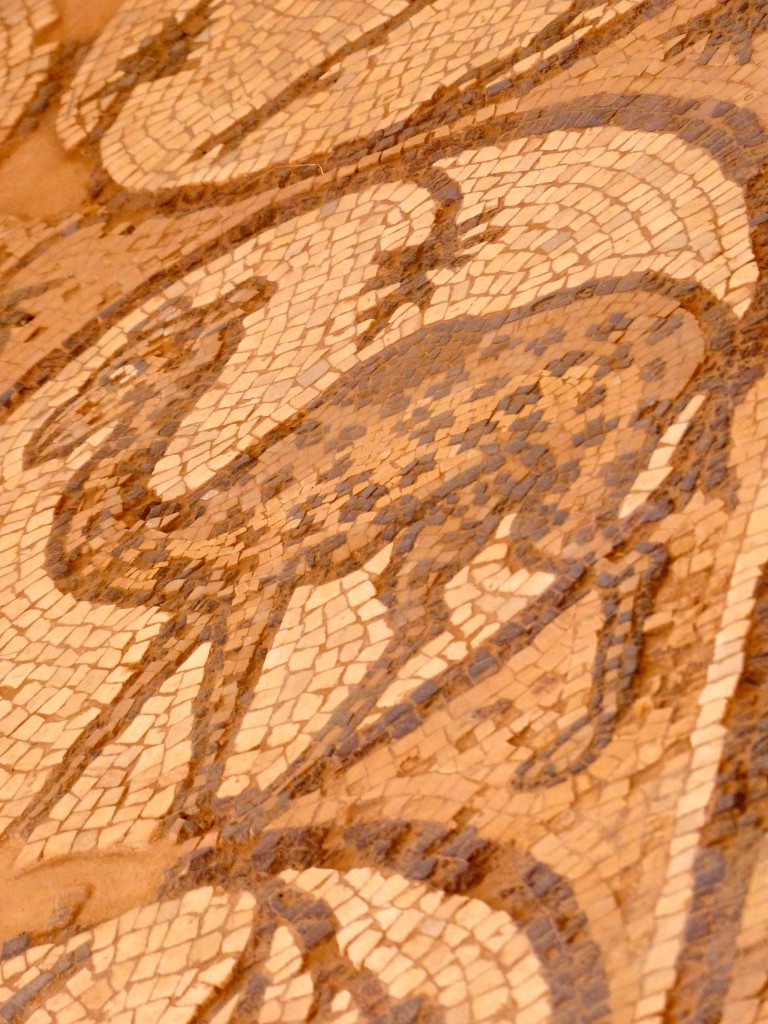
At this point in our visit, the skies cleared, and the sun appeared and warmed our bones, giving us renewed energy to keep hiking. We found a path that passed by the massive Qasr al-Bint, a 1st-century BC temple, and wound up around the cliffs of Al-Habees, a large hill topped by the ruins of a 12th-century crusader fort. On this trail, we saw many uninhabited caves, deserted in the 1980s when the Jordanian government relocated cave-dwelling Bedouins to a nearby village in response to Petra’s new UNESCO World Heritage Site status. On the west side of the hill, we had breathtaking views of Wadi Sayyagh, a valley full of lemon trees, I was told.
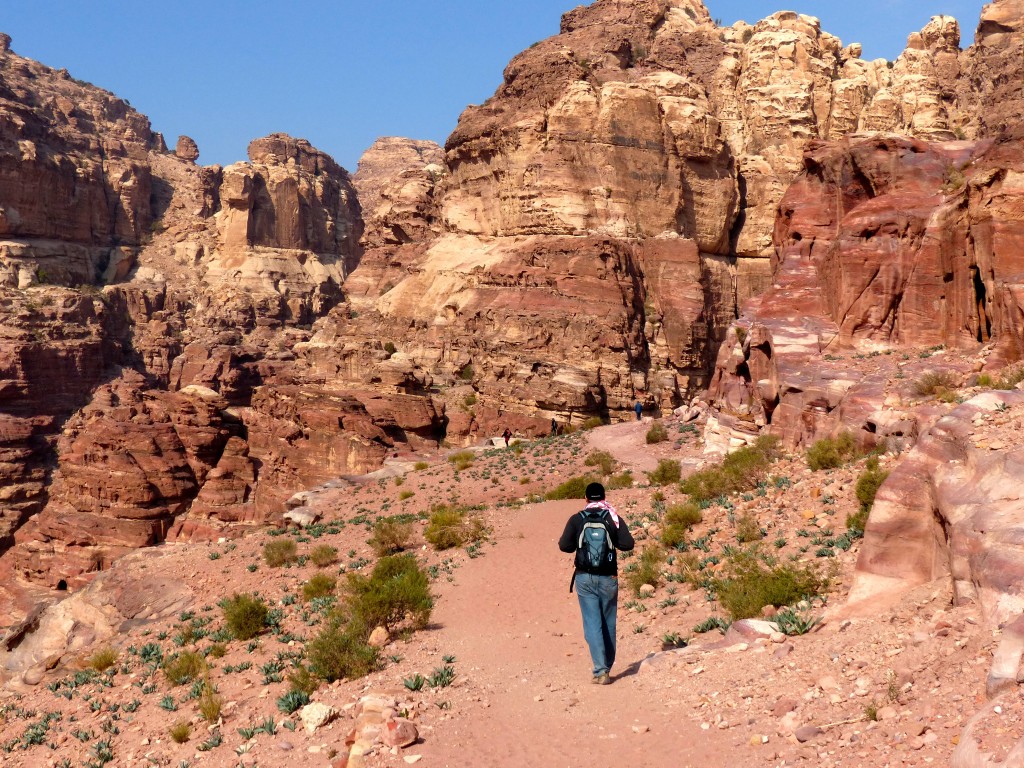
We also encountered rocks painted over millennia by mineral deposits and erosion. Stripes and swirls of crimson, salmon, ecru, peach, saffron, sepia, silver, jet black and more. I became obsessed with a bright yellow stripe I found on many rock formations. Nobody could tell me what it was. Get ready for a bunch of pictures of rocks. I couldn’t resist.
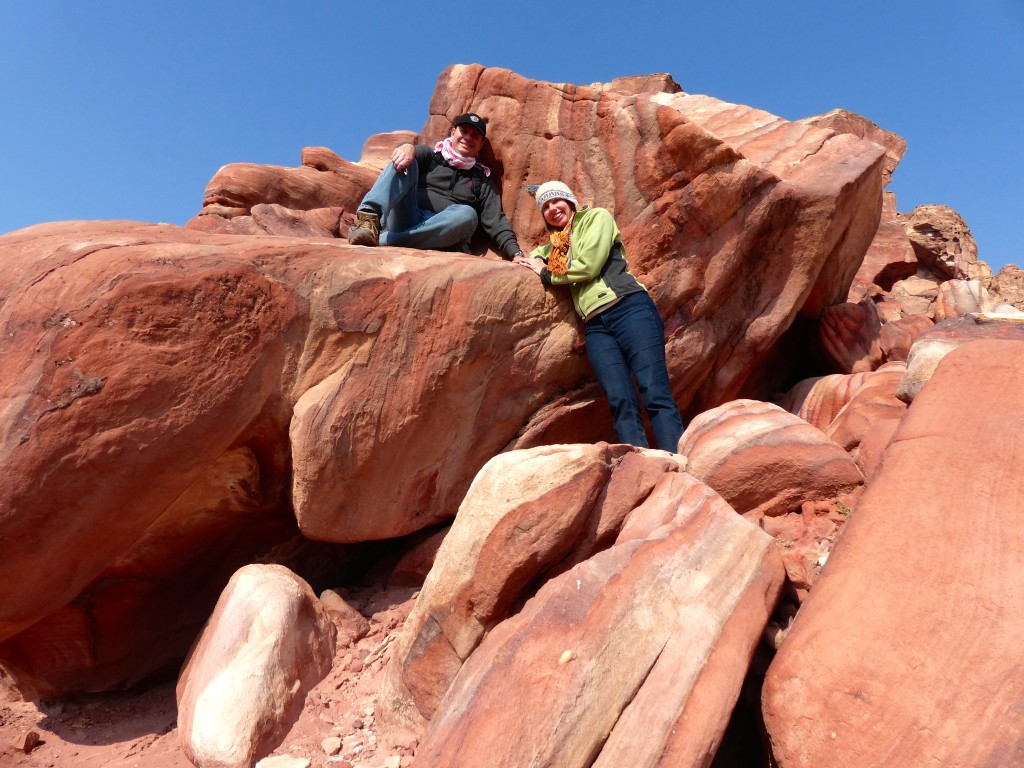
We poked around a few other areas of the park, and I took this panorama shot of the Royal Tombs on our way out. It’s overexposed, but I like it anyway.
